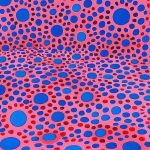In an era dominated by fleeting selfies and algorithm-driven visual culture, the work of Kehinde Wiley stands as a bold counterpoint—a vibrant fusion of classical artistry and contemporary urgency. Known for his large-scale, hyper-decorative portraits that center Black and Brown subjects within frameworks of historical European painting, Wiley has spent decades challenging the conventions of portraiture. But as technology reshapes how we create, consume, and critique art, Wiley’s practice offers a compelling blueprint for reimagining representation in the digital age. This article explores how the artist merges tradition with innovation, leverages digital tools to democratize visibility, and sparks critical dialogues about identity, power, and belonging in a hyperconnected world.
From Harlem to the World: The Evolution of a Visionary
Wiley’s journey began in South Central Los Angeles, where he first encountered the exclusionary norms of Western art history. “I grew up seeing portraits of kings, nobles, and saints—none of whom looked like me or the people in my community,” he remarked in a 2018 interview. This disconnect fueled his mission to insert marginalized voices into the canon. His breakthrough came in the early 2000s with his Passing/Posing series, where he photographed strangers on Harlem streets and reimagined them as Baroque-style icons, swathed in ornate floral backgrounds. These works subverted the Eurocentric hierarchy of portraiture, replacing aristocrats with everyday Black individuals rendered in heroic scale.
Yet Wiley’s work transcends mere inversion. By blending 18th-century compositional techniques with street-cast models wearing modern attire, he creates a visual dialectic between past and present. This interplay became a hallmark of his style, later amplified through digital experimentation.
The Digital Studio: Technology as a Collaborative Tool
While Wiley’s aesthetic draws heavily from Old Masters like Titian and Gainsborough, his process is unmistakably 21st-century. Central to his practice is the use of digital tools to democratize the creative workflow.
- Crowdsourced Casting:
Wiley’s iconic portraits begin with an open call. Using social media platforms like Instagram and community outreach, he invites diverse individuals—often strangers—to pose for his paintings. This crowdsourced approach upends traditional portraiture’s exclusivity, transforming subjects into active collaborators. As Wiley told The Guardian, “The street is my museum. The people are my archive.” - Digital Sketching and Augmented Reality:
In recent years, Wiley has incorporated AR filters and 3D modeling software to prototype compositions. For his 2022 series Colorful Realm, he used digital collages to layer African textiles and Japanese ukiyo-e patterns onto portraits, creating hybrid identities that defy geographic or temporal boundaries. - NFTs and Blockchain:
Never one to shy from innovation, Wiley entered the Web3 space in 2021 with The Prelude, an NFT collection that animated his signature floral motifs. While critics debated the ecological impact of NFTs, Wiley framed the project as an experiment in “decentralizing ownership” of Black art.
These tools don’t replace traditional painting but expand its possibilities. As he stated at a 2023 TED Talk: “Technology isn’t the enemy of the artist; it’s a bridge to futures we haven’t yet imagined.”
Reclaiming Visibility in the Algorithmic Age
In a digital landscape where Black faces are often reduced to memes, trauma tropes, or algorithmic afterthoughts, Wiley’s portraits assert an unapologetic presence. His subjects gaze directly at the viewer, their poses echoing Napoleon’s grandeur or Marie Antoinette’s poise. By transplanting these postures onto Black bodies, Wiley confronts the historical erasure of non-white figures in art—a erasure perpetuated by today’s biased facial recognition systems and AI datasets.
This tension between analog and digital representation is epitomized in his 2020 portrait of Breonna Taylor. Commissioned by Vanity Fair, the painting reimagines the slain EMT worker as a Renaissance Madonna, her figure framed by lilies (a symbol of justice). Shared millions of times online, the image became both a memorial and a digital rallying cry, illustrating how traditional mediums can acquire new resonance in virtual spaces.
Cultural Impact: From Museums to Memes
Wiley’s influence extends far beyond gallery walls. His 2018 presidential portrait of Barack Obama—the first official portrait by a Black artist—generated over 4.2 million Instagram likes and countless parodies. Detractors called it “too flamboyant”; supporters hailed its rejection of staid presidential imagery. Crucially, the portrait’s virality underscored how digital platforms can democratize access to high art, sparking global conversations about race and representation.
Meanwhile, younger audiences have remixed Wiley’s aesthetic into TikTok trends and fan art. A 2023 study by the Art Institute of Chicago found that 68% of Gen Z visitors to Wiley’s retrospective cited social media as their introduction to his work. This digital-to-physical engagement loop reflects a broader shift in how art is discovered and consumed—a shift Wiley actively cultivates.
Ethical Dilemmas: Who Controls the Image?
Yet the digital age brings complex challenges. In 2021, Wiley faced criticism when an AI art generator trained on his style produced unauthorized derivatives. The incident raised questions about authorship in an era of machine learning. Wiley’s response was characteristically nuanced: “Imitation is inevitable, but context is everything. The question isn’t just who makes the art—it’s who profits from it.”
Similarly, his use of African motifs has sparked debates about cultural appropriation versus homage. For his Lagos/Osogbo series (2019), Wiley collaborated with Nigerian artisans to create batik backgrounds, sharing royalties with local communities. This model of equitable collaboration offers a template for ethical digital artistry in a globalized world.
The Future of Portraiture: A Dialogue Without Borders
As augmented reality glasses and AI avatars redefine human interaction, Wiley’s work hints at a future where portraiture transcends canvas and screen. His 2024 collaboration with MIT Media Lab, Floating Worlds, allows users to project 3D holograms of his paintings into physical spaces via AR apps. Participants can “step into” the ornate frames, blurring the line between observer and subject.
Such projects align with Wiley’s belief that “art must evolve or become a relic.” Yet even as he embraces cutting-edge tools, his core mission remains rooted in human stories. Whether painting a Senegalese surfer or coding an NFT, Wiley insists on centering marginalized narratives—a reminder that technology’s highest purpose is to amplify, not erase, our shared humanity.
Conclusion: A New Canon for a New Era
Kehinde Wiley’s career embodies the paradox of our times: the deeper we plunge into the digital unknown, the more we crave authentic connection. By merging the tactile richness of oil painting with the boundless reach of digital media, he constructs a new visual language—one that honors tradition while dismantling its hierarchies.
In doing so, Wiley doesn’t just reimagine portraiture; he reimagines possibility itself. His work invites us to ask: In a world of infinite screens, whose stories deserve to be enlarged, embellished, and eternalized? The answer, as his portraits proclaim, is everyone’s.
















